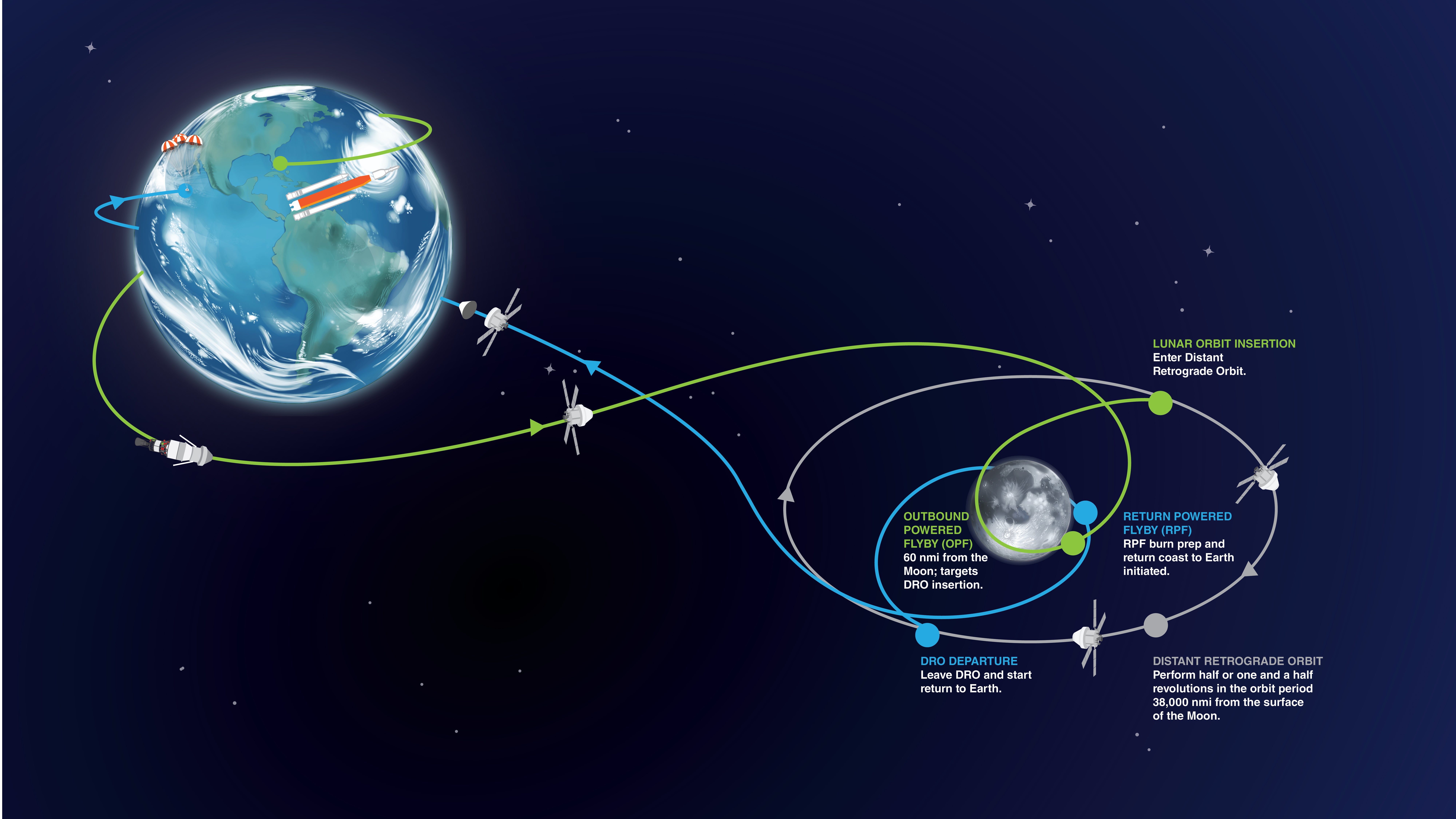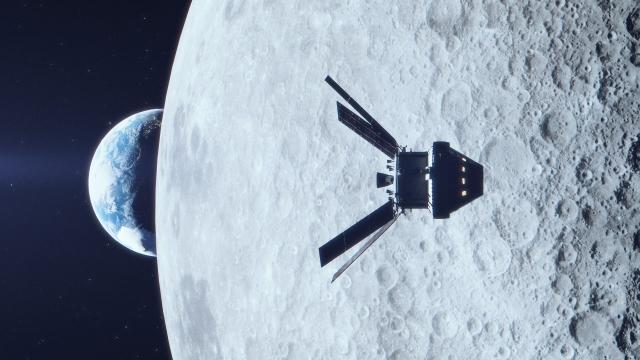NASA’s Space Launch System blasted off on Wednesday, sending the uncrewed Orion spacecraft on a 25-day journey to the Moon and back. Orion should reach its destination early next week, at which time it’ll perform some intricate orbital acrobatics and set a number of spacefaring records in the process.
We’re in day two of Artemis 1, and the mission appears to be going well. SLS lit up the Florida sky early Wednesday morning, using its 8.8 million pounds of thrust to propel the $US20 ($28) billion Orion capsule to space. Following a successful trans-lunar injection, Orion separated from the rocket’s Interim Cryogenic Propulsion Stage some two hours into the mission. The capsule, with its trusty companion, the European Service Module (ESM), are now cruising to the Moon.
The launch alone was spectacular, but several cool milestones lay ahead. Orion is propelled by the ESM, which, in addition to providing power and regulating temperature, is responsible for making course corrections along the way. Le voyage dan la lune is expected to take about five days, during which time mission controllers will keep close tabs on the capsule’s systems.

On Monday, November 21, Orion will start the process of entering into a distant retrograde orbit (DRO) around the Moon, in which the spacecraft will orbit in the opposite direction of the Moon’s spin. To get there, the ESM will need to perform an outbound powered fly-by burn at 7:44 a.m. (all times Eastern), at which time the spacecraft will come to within 60 miles (97 km) of the Moon. This will be Orion’s closest approach to the lunar surface.
The Moon’s gravity will then propel Orion into DRO, sending it 40,000 miles (64,000 km) beyond the Moon before it turns back. The DRO insertion burn is scheduled for November 25 at 4:52 p.m., the 10th day of the Artemis 1 mission.
This distance is 30,000 miles (48,000 km) farther than the previous orbital distance record, set in 1970 during Apollo 13. It’ll also be the farthest distance that a crew-rated spacecraft (i.e., a spacecraft designed to handle human passengers) has flown from Earth. As it stands, the Apollo 13 crew travelled the farthest from Earth of any humans, which is some serious bragging rights. Orion won’t break this record during Artemis 1, as there’s no one on board, but the crew of Artemis 2, currently scheduled to launch in late 2024, is poised to smash this record.
Orion is set to break the Apollo 13 record at 8:42 a.m. on Saturday, November 26 (day 11), and reach its maximum distance from Earth at 4:05 p.m. on Monday, November 28 (day 13), at which point the spacecraft will be 298,565 miles (480,494 km) from home.
Speaking to reporters during a pre-launch briefing on August 5, Rick LaBrode, lead Artemis 1 flight director, said Orion will attempt to capture an Earthrise image similar to the ones taken during Apollo. The capsule will also snap some photos when it reaches its maximum distance from Earth, LaBrode added.
Orion will commence its departure from DRO on December 1 (day 16), performing a trajectory manoeuvre at 4:53 p.m. The spacecraft should arrive home on December 11, at which time it will need to survive atmospheric reentry and a splashdown in the Pacific Ocean.
When all is said and done, Orion will have travelled 1.3 million miles (2.1 million kilometers), in what will be yet another record — the longest distance ever traversed by a crew-rated capsule. But that’s not all, as Orion will set records for remaining in space longer than any other crew-rated spacecraft without docking to a space station and for being the hottest and fastest crew-rated capsule to hit Earth’s atmosphere.
Artemis 1 is ambitious, no doubt, but it has to be. The Artemis program as a whole is serving as a stepping stone to getting humans to Mars, and the stuff we learn now will inform those future missions to the Red Planet. As an example, Orion will return from the Moon at Mach 32, but the capsule, on its return from the Red Planet, will be moving at Mach 36, NASA administrator Bill Nelson told reporters on August 3. A key goal of Artemis 1 is to evaluate Orion’s ability to reenter Earth’s atmosphere at high velocity, in what will be a key test of its heat shield.
“We’ve got a lot of testing to do,” said Nelson. He’s absolutely right, hence the importance of Artemis 1. The mission is off to a great start. Let’s hope it stays that way.
More: Thrilling Photos of NASA’s SLS Megarocket Launch to the Moon
